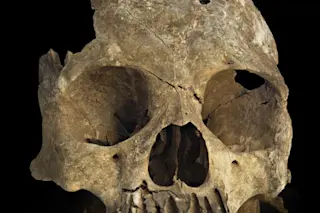When the Americas were first settled, sometime in the past 25,000 years, it happened from the top down. Eurasians made their way across the Beringian land bridge (or followed the coastline, what’s known as the Kelp Highway hypothesis) from Siberia to Alaska and spread throughout their new territory.
Once they were here, recent evidence has indicated that it didn’t take very long, a few thousand years perhaps, for people to reach the tip of South America, though there’s some disagreement as to the routes and timing of the migrations. Other groups ventured east to what is now southern Ontario, and the Americas were well on their way to being truly settled.
A related paper provides additional details about how ancient Americans spread throughout the New World. You can find Discover’s coverage of that research here.
The story isn’t quite that simple, though. While researchers have previously thought of this process ...














